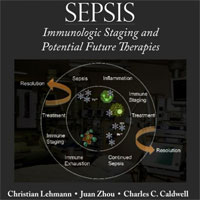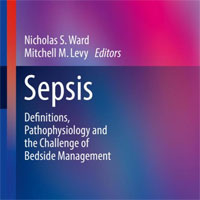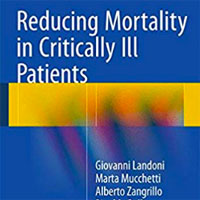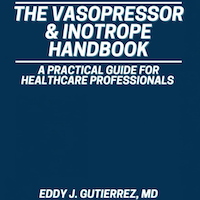Tag: PEEP
Increased Dead Space Ventilation and Refractory Hypercapnia in Patients with COVID-19
We speculate that thromboinflammation with pulmonary microvasculature occlusion leads to a sudden increase in dead space and shunt resulting in severe hypercapnia and hypoxemia in coronavirus disease 2019 patients. Early... read more
Automated vs. Conventional Ventilation in the ICU
Automated ventilation (AV) appears to reduce the incidence and severity of blood oxygen desaturation during daily nursing procedures (DNPs) in comparison to Conventional Ventilation (CV). Of the 265 included patients,... read more
Development of Persistent Respiratory Morbidity in Previously Healthy Children After ARF
Persistent respiratory morbidity develops in up to potentially 44% of previously healthy children less than or equal to 24 months old at follow-up after acute respiratory failure (ARF) requiring mechanical ventilation. This... read more
Cardiovascular Phenotypes in Ventilated Patients with COVID-19 ARDS
Approximately two-thirds of patients admitted to the intensive care unit (ICU) for coronavirus disease-19 (COVID-19) pneumonia present with the acute respiratory distress syndrome (ARDS). COVID-19-associated acute cardiac... read more
Transpulmonary Thermodilution Detects Rapid and Reversible Increases in Lung Water Induced by PEEP in ARDS
In ARDS patients, changing the positive end-expiratory pressure (PEEP) level induced parallel, small and reversible changes in EVLW. These changes were not due to an artefact of the TPTD technique and were likely due to the... read more
The End-expiratory Occlusion Test
There is growing evidence that the end-expiratory occlusion (EEO) test reliably detects preload responsiveness. It is easier to perform than passive leg raising and has less limitations than pulse pressure variations, provided... read more
Prevention and Treatment of ALI with Time-controlled Adaptive Ventilation
Neither the current lung protect and rest nor open lung approach (OLA) ventilation strategies have been effective at reducing VILI and ARDS-related mortality below that in the ARMA study. For a protective ventilation strategy... read more
Nationwide System to Centralize Decisions Around ECMO Use for Severe COVID-19 Pneumonia in Japan
The novel coronavirus disease 2019 (COVID-19) is spreading in Japan. The number of patients who need extracorporeal membrane oxygenation (ECMO) is expected to increase; however, the clinical characteristics of the patients... read more
Management of COVID-19 Respiratory Distress
Acute respiratory distress syndrome (ARDS) can originate from either the gas or vascular side of the alveolus. Although the portal for coronavirus disease 2019 (COVID-19) is inhalational, and alveolar infiltrates are commonly... read more
COVID-19 Pneumonia: ARDS or Not?
Even though it can meet the ARDS Berlin definition, the COVID-19 pneumonia is a specific disease with peculiar phenotypes. Its main characteristic is the dissociation between the severity of the hypoxemia and the maintenance... read more
Is COVID-19 ARDS?
Acute respiratory distress syndrome (ARDS) is a heterogeneous disease. It presents with a wide range of severity, varying degrees of hypoxemia and varying degrees of pulmonary mechanical impairment. Failure of hypoxemic vasoconstriction... read more
A Better Way of Connecting Multiple Patients to a Single Ventilator
This differential multi-ventilation setup yields increased safety, monitoring and control for each connected patient. In an ideal world, no one treating patients with Acute Respiratory Distress Syndrome (ARDS) would have... read more
Splitting Ventilators to Provide Titrated Support to a Large Group of Patients
COVID-19 can out-strip the number of mechanical ventilators available to us. This has led to interest in using a single ventilator to support multiple patients. This post will review the theory and evidence regarding this... read more
ARDS Diagnosis May Be Underrecognized
The February 27, 2020 Department of Internal Medicine Medical Grand Rounds "Acute Respiratory Distress Syndrome (ARDS),” was presented by Marc Moss, MD, Roger S. Mitchell Professor of Medicine; head, Division of Pulmonary... read more
Respiratory Drive in the ARDS: Pathophysiology, Monitoring, and Therapeutic Interventions
Neural respiratory drive, i.e., the activity of respiratory centres controlling breathing, is an overlooked physiologic variable which affects the pathophysiology and the clinical outcome of acute respiratory distress syndrome... read more
Which Component of Mechanical Power is Most Important in Causing VILI?
Repeated applications of tidal energy inflict lung damage (VILI) when stress and strain exceed the limits of tissue tolerance. Inflation work and energy are the products of pressure and volume, which are loosely associated... read more
Ventilatory Support and Mechanical Properties of the Fibrotic Lung Acting as a “Squishy Ball”
The management of the patient with lung fibrosis in the ICU is a challenge for the intensivist. The lack of studies defining the mechanical ventilation strategy, and the different underlying etiologies, make it difficult... read more
Expiratory Muscle Dysfunction in Critically Ill Patients
The expiratory muscles are the "neglected component" of the respiratory muscle pump. Rather as the heart does not comprise only a left ventricle, but also a right one, the respiratory muscle pump is much more than just the... read more
Prone Positioning Monitored by Electrical Impedance Tomography in Patients with Severe ARDS on VV-ECMO
Prone positioning (PP) during veno-venous ECMO is feasible, but its physiological effects have never been thoroughly evaluated. Our objectives were to describe, through electrical impedance tomography (EIT), the impact of... read more
Risk Factors for the Development of ARDS in Mechanically Ventilated Adults in Peru
In this study of mechanically ventilated patients, 31% of study participants had acute respiratory distress syndrome (ARDS) at some point during their ICU stay. Optimal lung-protective ventilation was not used in a majority... read more
Mechanical Ventilation in Patients with Acute Ischemic Stroke
Although there are no specific data regarding the effect of respiratory management on stroke patients' outcomes, specific ventilator strategies in this population could potentially improve neurologic outcome and prevent respiratory... read more
Adaptive Mechanical Ventilation with Automated Minimization of Mechanical Power
Adaptive mechanical ventilation with automated minimization of inspiratory power may lead to more lung-protective ventilator settings when compared with adaptive mechanical ventilation according to Otis' equation. Comparing... read more









